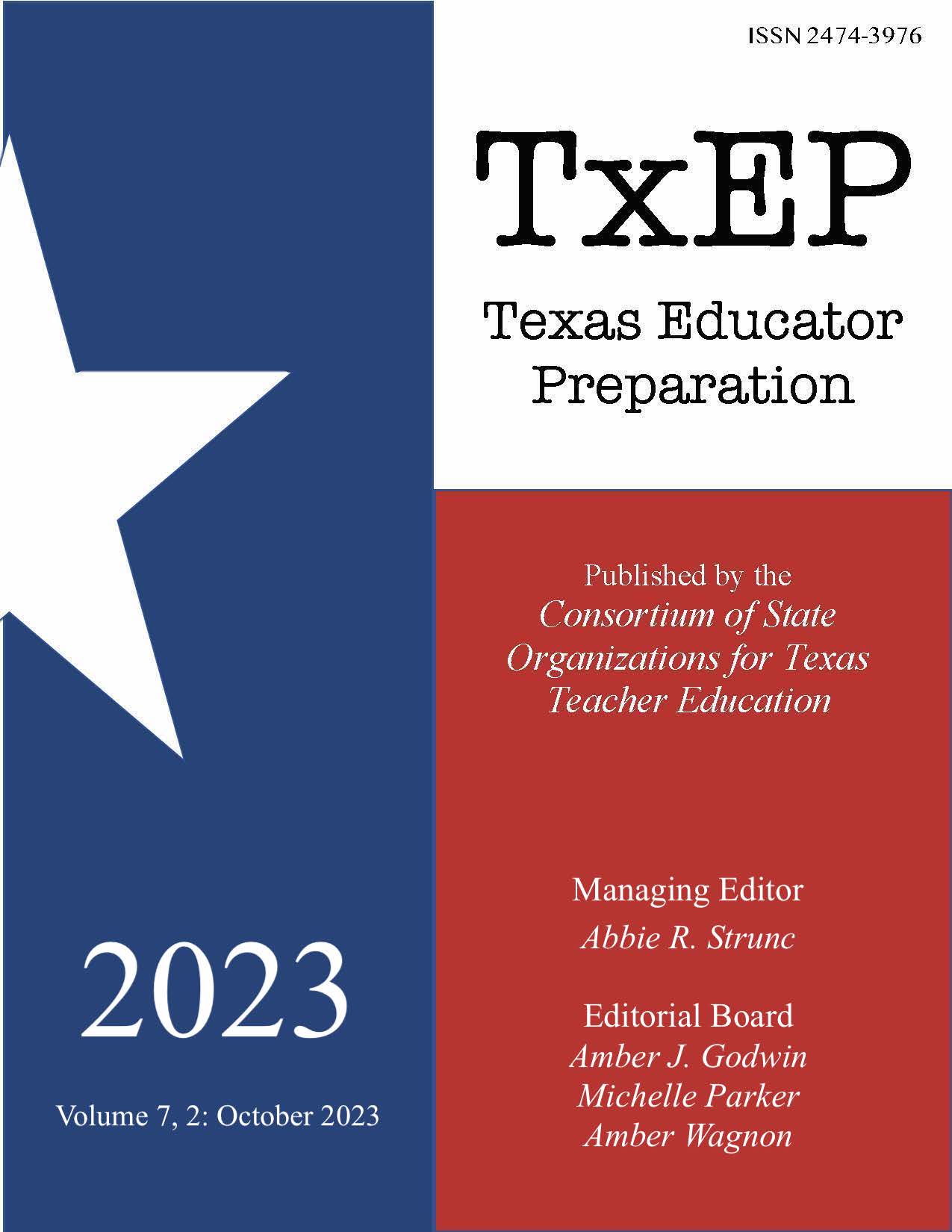Addressing the Teacher Shortage Crisis: One Regional University's Approach to Mobilizing a Response to Partnering School Districts
DOI:
https://doi.org/10.59719/txep.v7i2.34Keywords:
Teacher Attrition, Partnership-Building, Effective Teacher WorkforceAbstract
Many researchers have studied the attrition problem that has been impacting teacher retention in K-12 classrooms for years, looking for ways to stem the tide of teachers leaving the workforce (e.g., Darling-Hammond, 2003; Ingersoll & Smith, 2004). However, almost half of educators continue to leave the workforce after three to five years of classroom teaching. After Covid-19, that number has increased, posing a difficult situation for school districts needing to hire effective, certified teachers. However, the question remains: how can institutions of higher education prepare effective educators to go into classrooms and remain there for the duration of their career? Research has demonstrated that teachers with more experience have a greater impact on students’ academic growth than teachers who have less than three years’ experience in a classroom. Ensuring that teachers are prepared to be effective teachers who remain in classrooms beyond the five-year mark is critical to student learning, especially students in lower socio-economic schools who may lag behind their more affluent peers. Researchers at a regional university in Texas determined that meetings with superintendents across a large swath of central Texas might assist all stakeholders in preparing effective teachers to enter and support the workforce in their area. This paper highlights strategic meetings and key findings that have been put into practice to work toward a certified and effective teacher workforce.
Keywords: teacher attrition, partnership-building, effective teacher workforce
Downloads
References
Andrews, B. D., & Quinn, R. J. (2005). The effects of mentoring on first-year teachers’ perceptions of support received, The Clearing House, 78(3), 110-116.
Carver-Thomas, D., Burns, D., Leung, M., & Ondrasek, N. (2022). Teacher shortages during the pandemic: How California districts are responding. Learning Policy Institute. https://doi.org/10.54300/899.809
Castro, A., & Edwards, W. (2021). Innovation to what end? Exploring the dynamiclandscape of Texas teacher preparation pathways. Education Policy Analysis Archives, 29(63), 1-36. https://doi.org/10.14507/epaa.29.6217
Darling-Hammond, L. (2003). Keeping good teachers: Why it matters, what leaders can do, Educational Leadership, 60(8), 6-13.
Doonan, D., & Kenneally, K. (2022). Americans’ views of public school teachers and personnel in the wake of COVID-19 in National Institute on Retirement Security: Reliable Research, Sensible Solutions, 1-20.
García, E., & Weiss, E. (2019). The teacher shortage is real, large and growing, and worsethan we thought. The first report in “The Perfect Storm in the Teacher Labor Market” series. Economic Policy Institute. Washington, D.C. epi.org163651
Ingersoll, R. M., & Smith, T. M. (2004). Do teacher induction and mentoring matter?, NAASP Bulletin 88(638), 28-40.
Jackson, V., & Saenz, M. (2021). States can choose better path for higher education funding in COVID-19 recession. Center on Budget and Policy Priorities. Retrieved from https://www.cbpp.org/sites/default/files/2-17-21sfp.pdf
Kennedy, B. (2020) The bilingual teacher shortage in one Texas school district: Practitioner Perspectives. Journal of Latinos and Education, 19(4), 338-354. https://DOI:10.1080/15348431.2018.1526688
Mason-Williams, L., Bettini, E., Peyton, D., Harvey, A., Rosenberg, M, & Sindelar, P. T. (2020). Rethinking shortages in special education: Making good on the promise of an equal opportunity for students with disabilities. Teacher Education and Special Education, 43(1), 45–62. https://doi.org/10.1177/0888406419880352
Pressley, T. (2021). Factors contributing to teacher burnout during COVID-19. Educational Researcher, 50(5), 325–327. https://DOI:10.3102/0013189X211004138
Williams, S. M., Swain, W. A., & Graham, J. A. (2021). Race, climate, and turnover: An examination of the teacher labor market in rural Georgia. AERA Open, 7(1), pp. 1–23 https://doi.org/10.1177/2332858421995514
Wong, H. (2003). Induction programs that keep working. In M. Scherer (Ed.), Keeping good teachers (pp. 42-49). Alexandria, VA: Association of Supervision and Curriculum Development.





